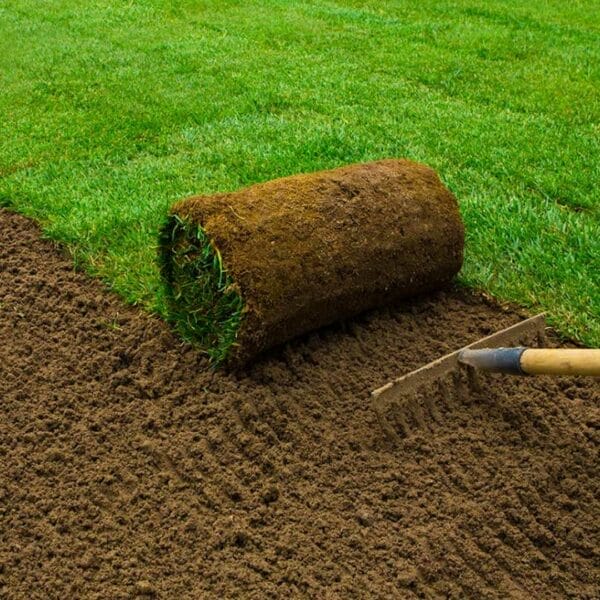Grass court tennis is an elegant, yet demanding discipline in the world of sports. The preparation of these courts for professional tournaments is nothing short of an art form, one that requires precision, dedication, and a deep understanding of nature’s whims. At our Grass Tennis Club, we take immense pride in our courts, knowing that every blade of grass contributes to the swift, dynamic play that defines grass court tennis. In this article, we’ll explore the intricate process of preparing grass courts, ensuring they meet the rigorous standards of professional tournaments.
Preparing Grass Court Tournaments
Learn how professional tennis tournaments are meticulously prepared on grass courts through essential maintenance techniques. – Mowing: Regular mowing at the right height ensures a consistent playing surface and promotes healthy grass growth. – Aeration and Topdressing: Aerating the soil improves drainage and root health, while topdressing helps maintain an even surface and adds nutrients. – Irrigation and Weed Control: Proper irrigation systems keep the grass hydrated, and effective weed control techniques prevent unwanted growth that can disrupt play.
Mowing
Daily mowing is non-negotiable for grass tennis courts, especially when preparing for a professional tournament. The grass must be maintained at a precise height, typically between 8 and 10 millimetres. This height is crucial for ensuring the speed and consistency of the playing surface, attributes that are characteristic of grass court tennis. I recall visiting Wimbledon, the holy grail of grass tournaments, and witnessing the groundskeepers meticulously measure and mow each court. It’s not just about aestheticsit’s about the integrity of the game.
The technology behind mowing has evolved tremendously. At our club, we employ precision mowers equipped with laser-guided systems to ensure uniformity. The mower’s blades are sharpened regularly to prevent tearing the grass, which could lead to disease and uneven growth. This level of detail ensures that players can expect a uniform experience, where skill rather than surface dictates the outcome.
Insider Tip: “Always mow in different directions each day. This prevents the grass from developing a grain, which can lead to uneven playing surfaces.” Groundskeeper at Wimbledon
Rolling
Rolling is another critical process in preparing a grass court. The goal is to create a firm and even base, minimizing any irregularities that might affect ball bounce. Rolling is not a one-time event; its a continuous process that intensifies as the tournament date approaches. Our groundskeepers at Grass Tennis Club use heavy rollers to compact the ground, ensuring a level playing field.
The history of rolling goes back to the early days of lawn tennis, where players themselves would sometimes roll courts before matches. Thankfully, technology has advanced, and we now utilize motorized rollers that provide consistent pressure across the court. This process not only enhances the playing experience but also prolongs the life of the court by preventing soil compaction and aiding drainage.
Link: For more on the foundational aspects of grass court preparation, visit How is the Foundation of a Grass Court Prepared?.
Aeration
Aeration is the silent hero in the maintenance of grass courts. It involves perforating the soil with small holes to allow air, water, and nutrients to penetrate the grass roots. This process is vital for maintaining the health of the grass, especially in the lead-up to a tournament. Aeration helps alleviate soil compaction, encourages root growth, and improves the court’s overall resilience.
At our club, we schedule aeration several weeks before a major tournament. This timing allows the grass to recover and strengthen, ensuring its in peak condition for play. The process is usually done using mechanical aerators that can cover large areas efficiently. The result is a lush, vibrant surface capable of withstanding the rigours of high-level competition.
Insider Tip: “Aerate when the soil is moist, but not waterlogged. It ensures better penetration and less stress on the grass.” Groundskeeper at Grass Tennis Club
Topdressing
Topdressing is the process of applying a thin layer of material over the playing surface. This enhances the quality of the soil, promotes better grass growth, and helps smooth out any minor imperfections. The material used for topdressing usually consists of sand mixed with organic matter, such as compost, which enriches the soil.
At Grass Tennis Club, we undertake topdressing in conjunction with aeration. The sand and organic matter fill the aeration holes, providing a medium for the grass to root deeper and more robustly. This practice has historical roots, with many old clubs adopting these techniques to preserve their courts quality. The result is a smoother, more durable playing field that meets professional standards.
Link: Discover the secrets of court maintenance in The Ultimate Guide to Grass Court Maintenance.
Fertilization
Fertilization is another critical component in preparing a grass court for professional play. The aim is to provide the grass with all the nutrients it needs to grow strong and healthy. A well-fertilized court ensures the grass can withstand the wear and tear of intense play, maintaining its aesthetic and functional qualities throughout the tournament.
Our approach to fertilization is tailored to the specific needs of our courts. We conduct soil tests to determine the exact nutrient requirements, ensuring we apply the right balance of nitrogen, phosphorus, and potassium. This precision ensures that the grass is neither overfed nor undernourished, striking the perfect balance for optimal growth.
Insider Tip: “Apply a slow-release fertilizer at least a month before the tournament. It provides a steady supply of nutrients without overwhelming the grass.” Agronomist at Grass Tennis Club
Irrigation
Irrigation is the lifeline of any grass court. Maintaining optimal soil moisture levels is crucial for grass health and court performance. Advanced irrigation systems are employed at our club to ensure even distribution of water across the courts, avoiding both dry patches and waterlogged areas.
The importance of irrigation was drilled into me during a visit to the Australian Open, where the extreme heat makes water management a critical aspect of court maintenance. At our club, we use automated systems that adjust water levels based on weather forecasts and soil moisture readings. This technology ensures the courts are always in prime condition, ready to host matches regardless of the weather.
Link: For insights on converting courts, check out How to Convert a Clay Court to a Grass Tennis Court.
Weed Control
Weeds are the bane of any tennis court. They not only ruin the aesthetic but also disrupt the playing surface, affecting ball bounce and player movement. Effective weed control is essential in preparing grass courts for professional tournaments.
At Grass Tennis Club, we employ a combination of manual and chemical methods to tackle weeds. Regular inspections allow us to identify and remove weeds before they spread. For persistent infestations, we use selective herbicides that target weeds without harming the grass. This meticulous approach ensures our courts remain pristine and play-ready.
Insider Tip: “Regularly inspect for weeds early in the morning when dew makes them more visible.” Groundskeeper at Grass Tennis Club
Pest Control
Pests can cause significant damage to grass courts, undermining months of meticulous preparation. From insects like grubs and beetles to larger pests such as moles, effective pest control is fundamental to maintaining court integrity.
Our club employs integrated pest management (IPM) strategies, combining biological, cultural, and chemical controls to manage pest populations. Regular monitoring and early intervention are key to preventing serious damage. By maintaining a balanced ecosystem, we reduce the need for chemical interventions, protecting both the environment and the playing surface.
Link: Learn more about professional court preparation in Professional Tennis Court Preparation.
Play
Finally, after all the preparation, it’s time for play. The real test of a grass court is how it performs under the pressure of a professional tournament. At Grass Tennis Club, we take immense pride in how our courts hold up, providing a stage where players can showcase their skills at the highest level.
The feedback from players and officials is invaluable, guiding future maintenance and preparation efforts. Each tournament is a learning experience, refining our techniques and reaffirming our commitment to excellence. Watching a match unfold on our meticulously prepared courts is a testament to the hard work and dedication of our entire team.
Insider Tip: “Post-tournament feedback is crucial. It helps improve the court’s performance for future events.” Tournament Director at Grass Tennis Club
Conclusion
Preparing grass courts for professional tournaments is a meticulous, multifaceted process. From mowing and rolling to pest control and irrigation, each step is vital in ensuring the courts are in peak condition. At Grass Tennis Club, were passionate about our craft, knowing that every detail contributes to the elegance and challenge of grass court tennis. Our commitment to excellence not only enhances the playing experience but also preserves the timeless allure of this beautiful game.
Frequently Asked Questions
Who organizes professional tournaments on grass courts?
Professional tournaments on grass courts are organized by national and international tennis federations.
What is the process of preparing grass courts for tournaments?
Preparing grass courts involves mowing, watering, and applying necessary treatments.
How do weather conditions affect grass court preparation?
Weather conditions significantly impact grass court preparation, affecting growth and playability.
What materials are used to maintain grass courts during tournaments?
Common materials include fertilizers, pesticides, and specialized turf maintenance tools.
How often are grass courts maintained during a tournament?
Grass courts require daily maintenance, including mowing and watering, throughout the tournament.
Some say grass courts are too difficult to maintain. Is that true?
While challenging, proper maintenance techniques can ensure grass courts perform optimally.











